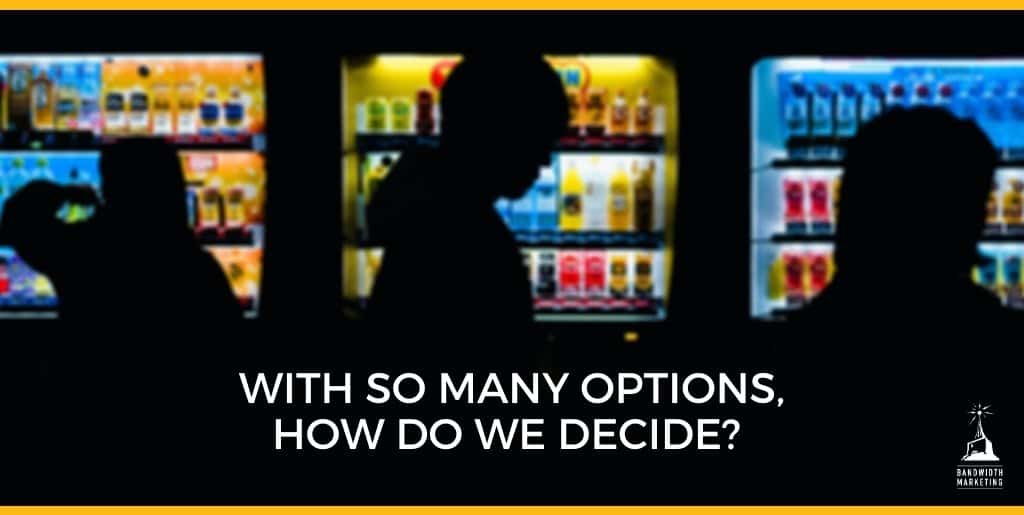
Having only one choice makes us feel restricted. A few choices make us feel like we are in control. Too many options leave us feeling uncertain and overwhelmed. As our possibilities grow, our ability to successfully make a choice begins to wane. This option overload was dubbed the Paradox of Choice in the 2004 book of the same name by Barry Schwartz.
When it comes down to it, the more choices we have, the harder it is to make a decision, especially when it’s high-stakes, like where to go to college or what career path to pick.
For instance, if one searches “winter jacket” on Google, the options are endless. So even if narrowing down to a specific brand, the choices are overwhelming. When one finally chooses and orders a jacket, we are more likely to be unsatisfied. The buttons are off, or we don’t quite love the color…. Our minds tend to contemplate the other options we had and wonder if we missed the chance to get the perfect jacket. Even though the one we got we liked initially, was in our budget, and will keep us warm, we still wonder if we missed out.
Giving customers fewer options may seem counterintuitive, but it has been proven by many studies. In a famous case featuring jam samples, psychologists Sheena Lyengar and Mark Lepper found that more options tend to attract more attention but lead to a smaller number of customers committing to a purchase. They set up jam samples in a supermarket with a $1 discount to those who sampled the jam. One day the display had twenty-four jams, and another day it only featured 6. The findings? With the larger display, people were ten times less likely to make a purchase.
As marketers, we can make it easier by developing strategies that make it easier for consumers to decide. By giving only a few high-quality options, we can increase satisfaction and remove the overwhelming feeling. How does satisfaction rise with fewer options? The fear of not making the right choice is reduced.
This paradox doesn’t just apply to buying products. It can also apply to software, insurance, retirement plans, and more. Think about purchasing software; many companies have adopted the three-tier model: small, medium, and large, with increasing features as the prices increase.
Of course, removing choice altogether is draconian; that’s how we have creative expression, new ideas, and innovation. But if we can simplify some of the smaller choices we all have to make, we might have more time to focus on the big decisions, and that beats getting paralyzed in the jam section, and we have to pick something new. Wait, is Burberry even a jam?
Sources:
Here’s How Adobe’s Director of Product Marketing Navigates the Paradox of Choice — First Round Review
Cutting Down On Choice Is The Best Way To Make Better Decisions — Business Insider
The Paradox of Choice Barry Schwartz
The Jam Experiment — How Choice Overloads Makes Consumers Buy Less — Medium
Posted By
BWM
Categories
Blog